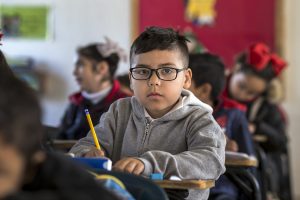 Neurodiversity encompasses those with thinking and learning differences, including but not limited to: ADHD/ADD, autism spectrum disorder (ASD), Asperger’s syndrome, and learning differences. For many, the “thinking differently” aspect of neurodiversity can lead to a student feeling frustrated, misunderstood, and underestimating his or her own abilities. In truth, neurodiversity can be a true strength, and harnessing the abilities that a neurodiverse perspective can bring creates for a more enriching learning environment for all students.
Neurodiversity encompasses those with thinking and learning differences, including but not limited to: ADHD/ADD, autism spectrum disorder (ASD), Asperger’s syndrome, and learning differences. For many, the “thinking differently” aspect of neurodiversity can lead to a student feeling frustrated, misunderstood, and underestimating his or her own abilities. In truth, neurodiversity can be a true strength, and harnessing the abilities that a neurodiverse perspective can bring creates for a more enriching learning environment for all students.
A critical aspect of neurodiversity is the individual differences that each person brings. We cannot generalize across the autism spectrum, learning spectrum, or behavioral spectrum, but rather we find more success in individualized learning plans. This is why many schools include those with learning differences in their special education program, with individualized education plans (IEPs) and inclusive learning environments.
Many neurodiverse individuals have attention differences. While this often includes inattention and distractibility, it can also mean a hyperfocus or fixation on a narrow range of ideas. Rather than butting up against these interests and creating an unnecessary power struggle, teach to the interests. While curriculums and balanced educations are important, if the reading time is increased when the student is allowed to read about their interest in dragons, for example, the outcomes are better, and there is less frustration when less preferred tasks are necessary.
There are often sensory differences, and a need for movement in neurodiverse learners as well. Creating a classroom environment with sensory supports available (for example, wiggle seats, fidget toys, soft blankets, or a rocking chair) may help. Expect that a neurodiverse student may need help with getting started, organizing thoughts or materials, or the opportunity to demonstrate their learning in an alternative format.
Neurodiverse learners benefit from a variety of supports and accommodations. From visual supports, preferential seating, and distraction free and/or extended time on tests, these accommodations do not exist to cheat the system or make life easier, but rather to level the playing field, and allow the student to learn and demonstrate their learning in a manner that maximizes their abilities.
A thorough understanding of what the students strengths and abilities are, which can often be a part of a psychological or psychoeducational evaluation, can help start the process of establishing supports and increasing the efficacy of the learning environment. If a student is in other services, such as therapy, social groups, speech therapy, or tutoring, it can be helpful to have all members of a team collaborate along with family members – neurodiverse learners tend to do best with structure and consistency.
At the same time, a neurodiverse learner may also require flexibility. Offering choices, attempting new learning strategies and offering information in different formats can also be helpful. Recognize, also, that a neurodiverse learners needs vary across the grade span, for different genders, and within different contexts.
For more information on how to support neurodiverse learning and education, contact us. We can help!
